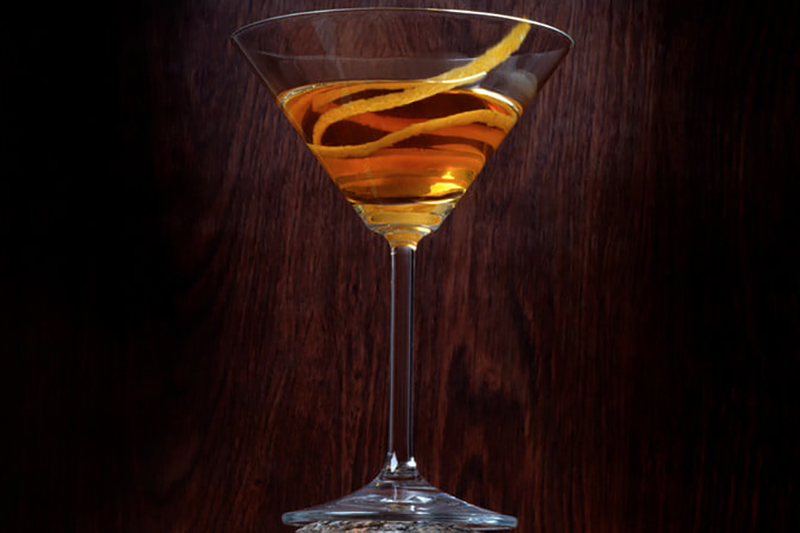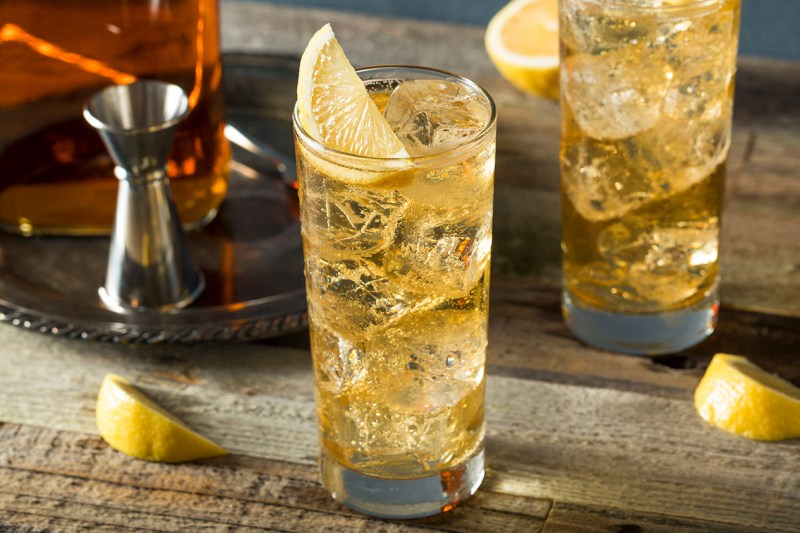
Scotch whisky isn’t called the water of life for nothing — it’s a divine spirit that works on so many levels. It brightens the days of the sad, and it calms the nerve-wracked masses. It’s always there for you. You can drink it neat, on the rocks, or with a few drops of water — however you choose, it’s a wonderful liquor.
We will admit that there are times when we want to enjoy Scotch whisky in a cocktail. We’re not saying use that bottle of Macallan 50 Years Old to mix up a drink, but if you’ve got a nice mid-shelf whisky, you can occasionally step outside your comfort zone and mix up a Scotch whisky cocktail to drink any time of the day.
Below, you’ll find four classic Scotch cocktails for this summer. Try a classic whisky riff and one modern classic (courtesy of New York City bartender Sam Ross) that you should know how to make for yourself and for any of the Scotch-loving people in your life.
The Rusty Nail

Ingredients:
- 1 1/2 ounces Scotch whisky
- 3/4 ounce Drambuie
Method:
- Add ingredients to a rock glass filled with ice.
- Stir and garnish with a twist of lemon.
The Rob Roy

Ingredients:
- 2 ounces Scotch whisky
- 3/4 ounce sweet vermouth
- 2-3 dashes Angostura bitters
Method:
- Add all ingredients to a mixing glass with ice and stir.
- Strain into a chilled cocktail glass and garnish with a cocktail cherry.
The Bobby Burns

Ingredients:
- 2 ounces Scotch whisky
- 3/4 ounce sweet vermouth
- 1/4 ounce Bénédictine
- 2 dashes Angostura bitters
Method:
- Add all ingredients to a mixing glass with ice and stir.
- Strain into a chilled cocktail glass and garnish with an orange twist.
The Blood and Sand

Ingredients:
- 3/4 ounce blended Scotch whisky
- 3/4 ounce sweet vermouth
- 3/4 ounce Cherry Heering
- 3/4 ounce blood orange juice
Method:
- Put all ingredients in a shaker with ice.
- Shake and strain into a chilled coupe glass.
- Garnish with an orange peel.
The Presbyterian

Ingredients:
- 2 ounces blended Scotch whisky
- Ginger ale, to fill
Method:
- Add ice to a highball glass.
- Pour in Scotch and top with ginger ale.
- Stir briefly to incorporate.
The Penicillin

(Created by Sam Ross, New York City)
Ingredients:
- 2 ounces blended Scotch whisky
- 1/4 ounce Islay single malt Scotch
- 3/4 ounce fresh lemon juice
- 3/4 ounce honey syrup
- 3 slices fresh ginger
Method:
- Muddle ginger to a cocktail shaker until well broken up.
- Add blended Scotch, lemon, and honey syrup.
- Add ice and shake well.
- Double strain into a rocks glass with ice, and float the Islay Scotch over top by pouring it over the back of a bar spoon.
Once you’ve mastered these essential Scotch cocktail recipes, try mixing up some of these other easy cocktail recipes.
Quick historical facts about Scotch

The history of Scotch whisky is a long and interesting one, dating back to around the 15th century.
- Early beginnings (15th century): The exact origins are unclear, but distillation likely came to Scotland around this time, possibly brought by monks. Early on, Scotch was produced in small batches for medicinal purposes or warmth.
- Illicit stills and taxation (16th to 18th centuries): As Scotch’s popularity grew, so did government attempts to tax it. This led to a rise in illegal distilleries and smuggling.
- Standardization and blending (19th century): The need for consistency led to regulations and the rise of blended Scotch whiskies, which combined different grain whiskies for a smoother taste. This innovation greatly expanded Scotch’s market reach.
- Global success and challenges (20th to 21st centuries): Scotch whisky became a worldwide phenomenon, but faced challenges like the phylloxera epidemic that boosted demand, and later, prohibition and global competition.
- Modern Scotch industry: Today, Scotch is a protected designation with strict guidelines on production. The industry is a major part of the Scottish economy and culture, with a wide variety of single malt and blended Scotch whiskies available for enjoyment.



